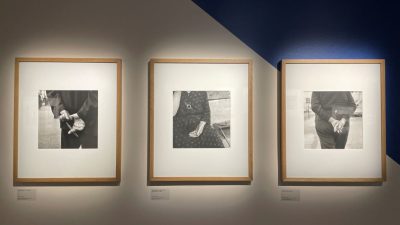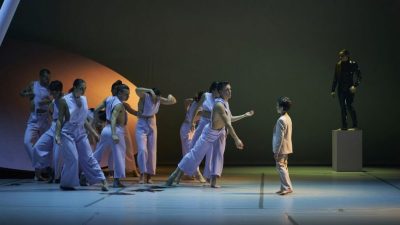The Christmas dance play by the Hungarian State Folk Ensemble, Wonderful Nativity, has become a long-standing tradition. The production, presented in 2018, revives folk traditions and Christian traditions, making it possible to experience the expectation of something special and unique, which stretches back to the Christmas holidays of the olden days. The spectacular sets, costumes, music and dancing create an extraordinary atmosphere that allows us to escape the crowds of the pre-holiday season and concentrate on the essence of the season.
If you open the Hungarian Ethnographic Dictionary at ‘Christmas’, you will find, among other things, that this holiday has developed a number of customs and beliefs that are partly based on pre-Christian images, the magical procedures of the winter solstice and the beginning of the year, and partly on the Christian nature of the holiday. During this period, not only various forms of love divination were practised, but also a variety of time-telling and even death-telling procedures for the coming year.
It was believed, for example, that during midnight mass, animals would speak and give their opinions of their masters. One of our oldest traditions is the Nativity celebrations, which begin as early as Advent. Christmas customs and beliefs are usually characterised by some kind of assurance of fertility, abundance and good fortune for the coming year, and this is reflected in the nativity scene.
The starting point of the performance Wonderful Nativity is the so-called “spinning”, a nativity play of the Szekler people of Bukovina, which is inscribed on the national list of intangible cultural heritage. Gábor Mihályi, the director-choreographer of the production and leader of the Hungarian State Folk Ensemble, has already spoken on several occasions about the revival of the nativity play in recent decades, although it is now only performed on stage. The nativity play was originally a popular street game, but nowadays it is mainly performed on stage, in schools, outdoors, in churches and other places.
The Bukovina nativity play has become the best known among school groups and other urban groups of art lovers, as a spinoff of the folk music movement. This nativity scene is a small example of the fate of the Szekler people, a community, their perseverance, their faith in human goodness and purity.
Five years ago, the Wonderful Nativity scene was born at the request of Csaba Káel, who wanted to offer the audience a performance that would entertain whole families and focus on Hungarian folk traditions, in addition to the usual Nutcracker performances.
This production was born from a mixture of peasant folklore and imagination, and was first performed at Müpa Budapest in 2018. The nativity play has been enhanced with new, modern elements that make it feel very much like a modern day experience: horses in sleighs, wanting to be manhandled, and snowflakes in wonderful costumes, enchanting us with their gorgeous costumes. There are also snowmen and roller-skaters.
Humour is also part of the folk tradition, including the story of the secret meeting of the snowmen. The story of a whole day is told in seven images, beginning with the arrival on Earth of child angels who wonder what is happening among people at Christmas time.
It reflects the religious nature of the nativity scene, as well as its fundraising and entertainment role. The highly spectacular performance includes well-known Christmas carols accompanied by folk dance, such as Shepherds, shepherds and the Angel from Heaven. The show is not without a literary touch, with poems by Anna T. Szabó and Géza Gárdonyi. Balázs Czigler’s scenic designs, Gábor Michac’s costumes, Szalonna’s music, Dezső Fitos, Enikő Kocsis and Gábor Mihályi’s choreography will provide a lasting experience for young and old alike, which everyone should see at least once.
Article: Anna Rácz
Translation: Nóra Fehér



























Comments